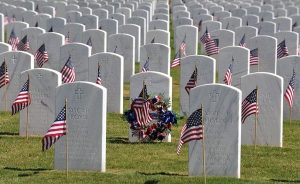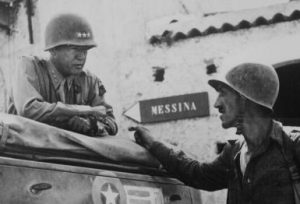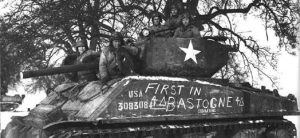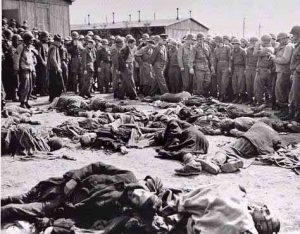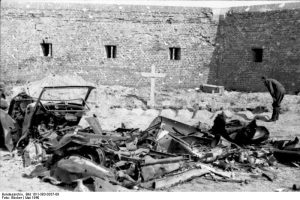Winning Hearts and Losing Lives
What are the Past and Present Military Strategies for Combating the Enemy?
By Paul E. Vallely, MG, U.S. Army (Ret.) and James A. Lyons Jr, Admiral, US Navy (Ret.)
– A Military View
“Always do everything you ask of those you command.”
– General George S. Patton
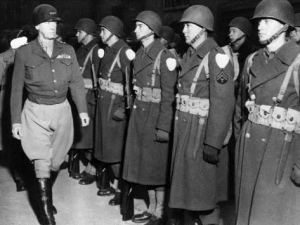
|
|
It is an honest question to ask if anyone in this Administration or the current senior military leadership would be able to look General George S. Patton in the eye and say they personally would do everything they have asked of today’s armed forces.
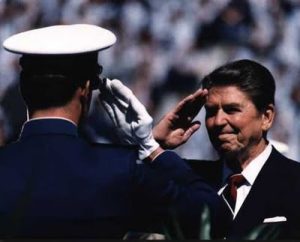
Understanding the evolution of the U.S. war strategy from the Reagan era to Obama’s ideals will set the stage for the mounting confusion the military is now experiencing to follow, let alone survive. Reagan viewed the military as his strongest weapon in achieving peace and diplomatic success. Obama employs the military as a global friend-winning enterprise. This difference alone demonstrates the willingness, or lack thereof, to recognize the enemy.
Reagan took seriously the first charge of the Federal government, which was to provide protection to its citizenry from enemies both foreign and domestic. Reagan understood a healthy, dominant military was the key to commanding respect and yes, even fears, from anyone who would consider disrupting the peace in the United States. In Reagan’s day, the U.S. was feared by its enemies across the world and with good reason. The signal he sent was not a bluff. With Reagan as Commander-In-Chief, our armed forces stood ready at all times to protect and defend the nation.
Obama’s approach is more along the lines of: why beat them when you can appease them? Many European nations have tried this approach and their citizens are now paying the bloody and horrifying price for this decision. Ever since Europe began their experiment with multiculturalism, danger has been the result. Riots in the streets of France (i) the terrible consequences of weakening resolve against shariah law (ii) and the murder in plain daylight of a British Soldier (iii) have been the result. It is suicidal for this nation to refuse to learn from the mistakes of its European allies.
Since the days of Reagan, the world has changed. The most prominent opponents the country faced in Reagan’s days were different. U.S. school children no longer are taught to duck under their desks in case of Soviet bombs and the focus is not on satellite wars and arms races – not at the moment, anyway. In those days, the threat of Islamic jihad was known, but the spread of communism was the main concern. Even though the motives and fields of war have changed, it still makes sense to take Reagan’s overall objective of achieving peace through strength.
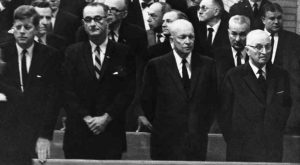
Admittedly, the use of the military pre-Obama was not perfect. In fact, numerous miscalculations in strategy committed by the White House can be found from President Kennedy onward. From Vietnam to Iraq and Afghanistan, Commanders-in-Chief have neglected or abused the diplomatic role of the military. Following starts and stops between Presidents Truman and Eisenhower, John F. Kennedy backed slowly into war by sending 16,000 U.S. Military “advisors” into South Vietnam, but he had no clear goal. After Kennedy’s assassination in 1963, President Johnson deepened the commitment in Vietnam and President Nixon ended it without a victory. From the start of Vietnam there was no endgame in sight and the high cost of that war is still felt. The financial waste was enormous, but the true cost came in the loss of nearly 58,000 American lives. The Vietnam debacle was the start of the restrictive rules of engagement and going to war without winnable strategies.
President Carter was paralyzed when it came to using the military as a powerful diplomatic tool, caving in to Iranian revolutionary Islamic fanatics. Carter did employ some feeble attempts at diplomacy, but ended his term with the Iranian hostage crisis. It can be said that he was not only responsible for the downfall of the Shah, but also the rise of the Islamic terror nation state that Iran has become.
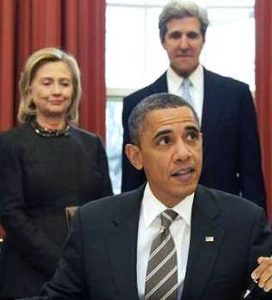
The last major diplomatic victory for the U.S. was the collapse of the Soviet Empire and the removal of the iron curtain with credit going to President Reagan’s leadership and vision. Since that time, can anyone point out to me, and America, what diplomatic victories or success we have had? We have spent billions of dollars of shuttle diplomacy around the world. Hillary Clinton and now John Kerry fly across the globe and appear to accomplish nothing! If one error could be highlighted it would be in 1983 when a suicide bomber drove a truck laden with TNT killing 241 U.S. Marines in a building at the Beirut airport (not a proper role for Marines and admitting a mistake by the national security team of Reagan). And a nearly simultaneous bomb detonated by a second suicide bomber in a truck killed 58 French soldiers of the Multinational Force during the Lebanese Civil War in Beirut, Lebanon. (iv) The Islamic terrorists were emboldened by the successes and America and her allies have paid dearly in the Middle East ever since. Our failure to respond became Osama bin Laden’s rallying cry that America can not suffer causalities. It should be noted that we had the planes on our carriers loaded and ready to launch the retaliatory strike which wo0uld have changed the course of history. We knew exactly where the terrorists were holed up in the Sheik Abdullah Lebanese Army Barracks, but the strike was prevented from launching by our own Secretary of Defense. President Reagan was ill served by that key Cabinet member.
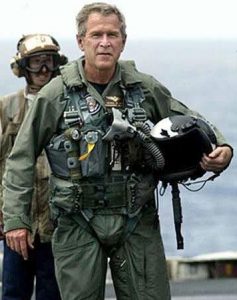
In the 1990s, President George H.W. Bush entered a war in order to defend Kuwait against the invasion of Iraq. The wisdom of this decision is extremely debatable. On the one hand, the U.S. was not in physical danger and did not have to enter that war. On the other hand, Saddam Hussein would have controlled one-fifth of the world’s oil supply and that would have indeed affected the world’s economy most negatively. Once again, before Bush made the choice, he should have established a clear endgame. However, Bush unwisely chose to subjugate the U.S. to the United Nations and walk away with the job undone. Instead of toppling Hussein’s regime, we stopped our forces at the gate to Baghdad. When he had the chance, he left the festering unfinished business of the first Gulf war to his son, President George W. Bush. This decision to walk away also freed Hussein to build and fill mass graves with the countless Iraqis he had murdered for their support of the U.S. during the war.
Bill Clinton, who needed to learn the military salute properly after he became President, maintained an incoherent foreign policy. Amidst his scandal-plagued time in office, many worldwide events occurred including the Bosnian War, the Black Hawk Down incident, the 1993 bombing of New York’s World Trade Center, the bombing of two U.S. embassies in Africa and the attack on the USS Cole. Although he attempted a very public showing of his diplomatic skills, Clinton all but ignored actual attacks. In the end, Clinton had no clear military success to his credit.
Then on September 11, 2001, Islamists lead by Osama bin Laden attacked the U.S, killing thousands. President George W. Bush was faced with the need to respond. Although Bush began with a Reagan-like lion’s roar, his effort eventually softened into an appeasement strategy. “Taking the war over there” as Bush became known for saying, rightly justified his initial war on Afghanistan. However, once again, there was and still is no pre-determined endgame or marker set for victory.
In 2003, the Bush war effort spread with the support of allied nations and many Democrats, including Hillary Clinton. The Bush Administration cited reports of weapons of mass destruction (WMD) as the main justification to then invade Iraq. Saddam Hussein was still in power, but had not kept his end of the peace agreement from the previous war with Bush the elder. Hussein had committed to allowing U.N. Inspectors into Iraq to assure the world that he was not stock-piling or using WMD.
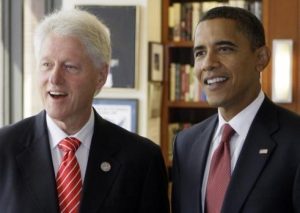
In 2006, toward the end of the Bush Administration, General David Petraeus introduced the COIN (counterinsurgency) strategy in Iraq. Publicly, the term COIN was not pressed. The term “surge” was used in its place. The Bush Administration knew that Conservatives and Moderates across the nation would rush to support the “Reagan-esque” move which sounded and was sold to the public as a “surge” of strength via a strong military presence. Supporters assumed that the suddenly increased number of troops being sent to Iraq would quickly stamp out the opposition and speed up the end of the drawn-out war.
COIN, as it was first implemented by Petraeus (v) in Iraq and followed by General Stanley McChrystal’s implementation in Afghanistan, was not a solid plan from the start. COIN does not call for decisive military action, but is more reflective of nation-building. The basic premise of COIN, instead of causing the world to maintain a healthy respect for U.S. capabilities, is to appease all nations and thus win their hearts and minds. The concept assumes if the U.S. helps to build up other nations, they will either no longer be the enemy or decide not to become one.
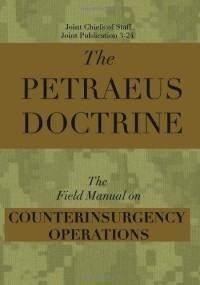
In order to best understand the devastating COIN strategy, if that is even possible, it is helpful to refer to an incredible article that was published in the New York Times by Elisabeth Bumiller on April 26, 2010, entitled, “We Have Met the Enemy and He Is PowerPoint.” The article was humorously written to demonstrate what might go wrong in the use of modern technology. Ironically, the chart used as the focus of the article is an absurdly complicated depiction of the early COIN strategy. Even the most brilliant military minds on earth would have enormous difficulty reading the chart, let alone understanding it. The article quotes a now infamous General, “When we understand that slide, we’ll have won the war,” General McChrystal dryly remarked, one of his advisers recalled, as the room erupted in laughter. (vi)
While a good laugh may be appropriate at times, the subject at hand is no laughing matter. In fact, the “bowl of spaghetti” as it was referred to in the article, is the basis of the incomprehensible COIN strategy. U.S. military forces, whose training has been purged of all specific references to the Islamic ideology and beliefs of many people in the Middle East, are expected to know, understand and follow the rules outlined for them in this incomprehensible image. The NY Times article rightly credits the finding of the slide to Richard Engel, NBC News Chief Foreign Correspondent. Below is an excerpt from Engle’s blog as he attempted to explain the COIN strategy:
“According to an unclassified military document from the office of the Joint Chiefs of Staff obtained by NBC News, the COIN strategy has a basic goal. The document says to successfully conduct a counterinsurgency, U.S. and NATO forces “must accomplish three tasks simultaneously”:
- Influence insurgent-minded individuals to adopt a neutral disposition.
- Influence neutral-minded individuals to adopt a supportive disposition.
- Retain supportive individuals.
In other words, COIN’s goal is to convince militants to stop fighting and to persuade Afghans sitting on the fence – those unsure whether to back the Taliban or President Hamid Karzai’s government – to throw their support behind the U.S.-backed government and its security forces.
Engle goes on to say:
“But for others, the diagram represents a fool’s errand that the United States has taken on in the name of national security.
Detractors say the slide represents an assault on logic, an attempt to jam a square peg into a round hole. They say the concept of occupying a foreign nation to protect security at home is expensive, time-consuming, ineffective and ultimately leads to the ‘spaghetti logic’ of the slide. They say this slide is what happens when smart people are asked to come up with a solution to the wrong question.”
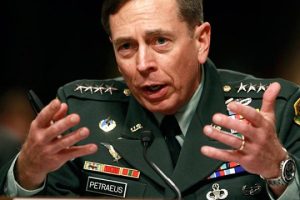
No doubt that the latter view in Engle’s blog is right.
Initially the “surge,” a.k.a. COIN, appeared to be a success as it was implemented in Iraq. This great news elevated Petraeus to American hero status; however, it was not the increased amount of troops that settled down the war, it was the increased amount of money spent. Unbeknownst to the public at the time, Petraeus entered a well-documented deal to pay off the coalition’s Sunni Arab opponents with large amounts of cash. If Petraeus felt the need to strike this deal then he, himself clearly didn’t believe in his own COIN Strategy, and with good reason. Col. Douglas MacGregor (U.S. Army. Ret.), Military Strategist and Author wrote:
“When the Surge in Iraq began, no one in Washington was interested in explaining why the world’s most powerful military establishment led by Petraeus was buying off its Sunni Arab opponents (Sons of Iraq) with hundreds of millions of dollars, effectively supplanting counterinsurgency with cash-based coopting. When the Surge in Iraq ended, no one in Washington wanted to discuss why Tehran’s Shiite allies in Baghdad restrained their fighters, and waited until the U.S. occupation ended before consolidating their control of Arab Iraq.
In 2009, an Iraqi journalist described the outcome in terms no serious observer of the conflict could ignore: ‘Observers not steeped in Iraqi history might be bemused to find that six years after the toppling of a dictator, after the death of several hundred thousand Iraqis, a brutal insurgency, trillions of wasted dollars and more than 4,000 dead US soldiers, the country is being rebuilt along very familiar lines: concentration of power, shadowy intelligence services and corruption.’’ (vii)
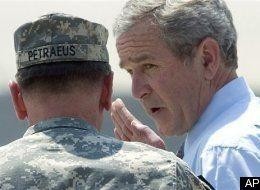
Although belief in and dependence on the overly ambitious Petraeus might someday prove to be the black-eye of Bush’s legacy, to his credit, President George W. Bush personally cared deeply about the men and women in the military. Bush believed in victory, but lacked the strategic vision to actually achieve victory. At least Bush was keenly aware of the enemy and, post- 9/11, Bush was not afraid to use the term “War on Terror” which showed his understanding of the radical ideology that threatens the West. It must be said, though, that Bush and his national security team did not fully understand radical Islam and the Global Caliphate. The national security team under Bush never comprehended that this war was always an unconventional war and needed to be fought that way versus the massive use of conventional forces and nation building.
With the 2008 election Obama became the new Commander-In-Chief. Under the Obama Administration things began to drastically change. In an effort to appease the enemies of America, Obama launched his Presidency with a global apology tour and the words “War On Terror” were soon replaced with “Overseas Contingency Operations.” The change in semantics by the Obama Administration was a direct reflection of the crucial shift in Presidential agendas (from Bush’s worldview to Obama’s) that has proceeded mostly unnoticed by the American people.
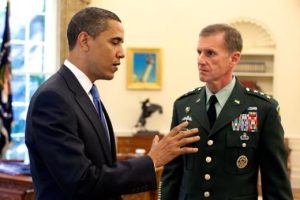
By the time Obama took office, Afghanistan was beginning to boil out of control as that war effort had seemingly been abandoned to beef up things in Iraq. Obama chose General Stanley McChrystal to rescue the effort in Afghanistan. McChrystal, who had been a key figure in Iraq, was to implement the COIN strategy only. Of course, the strategy needed to be tailored to the once Taliban- dominated Afghanistan.
Like the surge in Iraq, in order to get things back on track and possibly even “win” the war, McChrystal publicly announced it would take up to 40,000 more troops. McChrystal’s first mistake was in publicly announcing what he wanted. Obama had already been suppressing the public image of General Petraeus because his Administration was afraid that Petraeus might try to run for President in 2012. Now McChrystal was putting Obama under the hot lights. The last thing Obama wanted to do was approve a big surge in troops when he wanted to be seen as the draw-down king, as promised in his campaign. The seemingly aggressive move did not fit the narrative Obama was building. Obama had been promoting that his handshake and outstretched hand to the world could be the key factors in achieving peace in the Middle East.
To demonstrate the conflict of interests, in an article posted in the Army Times, Kimberly Dossier (AP) on January 5, 2103, said “McChrystal describes how he presented his war goal to the White House as ‘defeat the Taliban’ and ‘secure the population,’ and was advised to lower his sights to ‘degrade’ the Taliban.”(viii) Eventually, Obama approved 30,000 troops and simultaneously announced the withdrawal of troops by 2014. This created an untenable position for U.S. forces. In other words, under the COIN strategy, softened even more by Obama, the troops are not there to fight but to win hearts, while merely degrading the opposing killers. Obama’s premature announcement of a date certain to withdraw U.S. troops has naturally led many Afghan commandos to turn on their U.S. trainers. After all, since these foot soldiers know they will soon be left alone the face the Taliban, many have chosen to switch their loyalties.
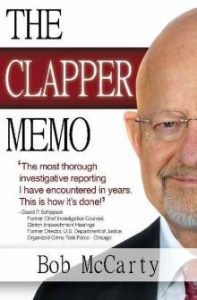
To make things worse, in Iraq, the U.S. military generally knew who the Sunnis, the Shia and the Kurds sects were within the Islamic faith and who was generally aligned with whom. In Afghanistan, things are far more confusing. With Al-Qaeda forces pouring over the border to embolden the Taliban fighters and a mix of at least ten tribal forces within the Islamic faith, knowing friend from foe is far more challenging. Undeniably this is confirmed by Bob McCarty’s The Clapper Memo. “Life for U.S. forces is very precarious living and working alongside the unvetted and untrustworthy Afghans wearing the uniforms of their country’s military, police and security agencies.”
On top of all the other concerns with the Afghanis that U.S. forces are facing, it turns out the Bush/Obama Administrations, inadvertently or otherwise, have been supporting the Afghan drug trade and thus further enriching the Taliban that U.S. troops are there to defeat. In early April of 2013, a NEW York Times/Reuters report was printed announcing the CIA had handed out bundles of “ghost money” paid to the Afghan president’s office since the beginning of the war.
“(Reuters) – Tens of millions of U.S. dollars in cash were delivered by the CIA in suitcases, backpacks and plastic shopping bags to the office of Afghanistan President Hamid Karzai for more than a decade, according to the New York Times, citing current and former advisers to the Afghan leader.” (ix)
The report goes on to say the money was intended to buy influence with Karzai for the CIA, but instead the money went to the Afghan National Security Council and was spent on empowering warlords and undermining the U.S. efforts in the country.
“Much of the money went to warlords and politicians, many with ties to the drug trade and in some cases the Taliban, the New York Times said.”
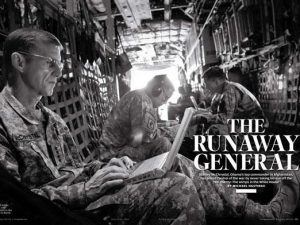
Amidst this debacle of attempting to build a nation that is replete with corruption, one year after McChrystal accepted the post in Afghanistan, he was forced to step down. McChrystal’s frustration with both Obama and Biden had spilled over in a bar and was reported by Michael Hastings in an article the embedded reporter wrote for Rolling Stone Magazine. Incidentally, Hastings, who was tragically killed in a car accident on June 18, 2013 at only 33 years old, subsequently wrote a book called The Operators: The Wild and Terrifying Inside Story of America’s War in Afghanistan that is worth the read. Hesitantly, Obama then appointed Petraeus to replace McChrystal.
Petraeus, who wanted to continue the appearance of success in Iraq, was then forced into the box of combining his idea of heavily armed nation builders with Obama’s demand to keep the troops on a short leash with a short time table. The result was not one, but two fool’s errands (Obama’s & Petraeus’) completely colliding with one another while U.S. troops were caught in the middle. Winning friends and building a nation that is in the middle of a war, with an announced “cut and run” date, is an impossible task.
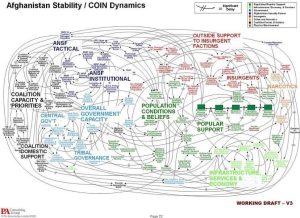
Putting the specifics of the current war aside, take a moment to consider the huge cost of the COIN strategy. Imagine if from now on every war effort put forth by the U.S. Military was not used to win wars, but to win hearts and minds. This would be accomplished by sending hundreds of thousands of troops over to occupy nations in order to “befriend them”, against their will, into submission. When that doesn’t work, military leaders identify who should be paid off. So far, the cost of COIN to the American taxpayer has been staggeringly higher than anything ever attempted before and with little success.
Although COIN is the first major attempt at counterinsurgency, this idea has been around in various forms for some time. The last war that did not involve the idea of counterinsurgency in the midst of the battle was World War II. It is no coincidence that the U.S. has not won a war since that time. Counterinsurgency involves the idea of sending U.S. forces to move in among the people of foreign nations. This involves moving in among the enemy within those nations. This is very dangerous business. This is especially dangerous when the coinciding Rules of Engagement (ROE) allow little room for self-defense. In fact, the war figures in dollars alone for the surge in Iraq and Afghanistan from conventional war to the COIN surge has already increased the cost of this war from billions into trillions. In 2001, the Congressional Budget Office showed the estimated appropriated budget for war efforts was $14 billion. The first couple of years of war in 2003 & 2004 the budget was in the $80 Billions. When COIN was implemented in 2007, costs jumped to 152 Billion and by 2011 it was $1,14 Trillion — that was two years ago.x The cost in American lives, especially under Obama’s watch, has been staggering as well and with no victories for the American people to show for it. The very nature of these activities further denigrates the U.S. soldier. Moving in and befriending other nations, with foreign beliefs, is not what they signed up for, and it is certainly not a mission of the Armed Forces.
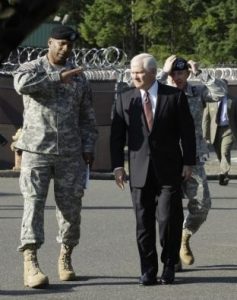
In 2010, Colonel Harry D. Tunnell IV wrote an eight-page letter to John McHugh, Secretary Of The Army, (xi) voicing his opinions and concerns about the conduct of tactical operations in southern Afghanistan. Since he had expressed his perspectives to a number of people formally and informally in the Army with little success, Tunnell resorted to typing out his frustrations. The following is an excerpt that exposes the untenable costs to the men and women who have left their families and flown overseas to befriend a people whose way of life is so literally foreign that it can almost not be believed. Sadly, however, this letter demonstrates the utter and complete failure of the COIN strategy. The letter shows that while U.S. forces are being asked to nation build in Afghanistan, the people of that nation live and believe in a lifestyle that is intolerable for American servicemen and women to abide. No U.S. Military Commander should be required to ask his troops to live in these conditions.
- – An overview of a few cultural behaviors…to determine if the objective is consistent with the reality. This cultural information is well known…a growing body of research from Human Terrain Teams and others.
a. It is unlikely that Afghan security forces will be able to conduct independent operations with any degree of reliability because of a lack of technical skills. For example they do not have the ability to maintain vehicle fleets very well – most Afghans simply cannot drive. Out of a class of ten at our recent academy to train a Fire and Rescue Service for Spin Boldak District, only two of the trainees had ever driven a vehicle – and that is given credit to the trainee who had driven a tractor once or twice in his life. Even simple tasks such as maintaining the head space and timing on M2 HB .50 cal Machineguns present challenges.
b. Attempts to integrate women into the security forces are unlikely to succeed. If this is an indicator of success we will assuredly fail. Afghan males are amongst the greatest misogynists in the world. The Burqa is not a Taliban invention; it is a Pashtu cultural norm. Efforts to integrate women into the military, government, and education are unlikely to meet with success.
c. Health and hygiene will not be maintained at an acceptable level to sustain availability of personnel. Afghan military units–particularly small outposts are bastions of filth. Rudimentary latrine facilities such as slit trenches are absent—even “cat holes” are unheard of. Afghans will select a room, if they are in a compound, and use it for a latrine. If they are in an outdoor outpost, they defecate in an area without measures to burn or discard the excrement—I have seen filth overflowing at such outposts. They use water, grass, or other materials to clean themselves—no soap and no barrier between their hands and feces. This is an enormous health hazard. A formation full of chronically sick people does not fight very well.
d. Aberrant sexual behavior is acceptable. Considering the misogynistic culture that is common, one should not be surprised that most men who join the security forces will have had limited interaction with women—a recruit may have never been alone with a woman who is not a relative. There is an acceptance of pedophilia that is wide spread and boys are sometimes kidnapped. Leaders have been known to sexually assault male subordinates—even if sexual activity between males is consensual it has implications for good order and discipline which is why, in many armies, fraternization is not allowed.
e. NCOs cannot perform basic leadership and supply accountability functions well because they are largely illiterate. NCOs cannot manage clothing records for their illiterate soldiers, they cannot maintain weapons and equipment accountability if they cannot read a serial number, they cannot read an operations order for a tactical mission. Since officers are frequently the ones who can read and write they may be relied upon to perform administrative duties rather than combat leadership—further limiting any potential for a well-led Afghan security apparatus that complements the security needs of the United States.
f. Of course the Taliban have similar problems. However, Taliban operations are smaller, their weapons and equipment much less sophisticated, and their objectives more narrowly focused so the impact is not as severe for them.
g. Finally, a main COIN assumption is that the population does not want what the Taliban have to offer. This is an unbelievably flawed assumption—it might be more correct to assess that the population does not like how the Taliban deliver but, the incontrovertible fact is that the Taliban are Pashtu and their cultural norms are the same as any other Pashtu male. Remember, the Burqa is a Pashtu cultural tradition. In fact, religiously inspired Pashtu movements are a traditional part of life in southern Afghanistan. The British, who in the nineteenth century were routinely forced to deal with such activity had a nickname for them: ‘Mad Mullah Movements.’ The most frequently ignored fact is that the average farmer in southern Afghanistan will appreciate far more what Mullah Omar is proposing than what we are with COIN, he just does not respond to how Mullah Omar is peddling his ideas.
******
M G Paul E. Vallely Is Chairman of Stand Up America US
i “Timeline: French Riots.” BBC News. BBC, 14 Nov. 2005. Web. 28 July 2013.
ii Doughty, Steve. “Britain Has 85 Sharia Courts: The Astonishing Spread of the Islamic Justice behind Closed Doors.” Mail Online. Associated Newspapers, Ltd., 29 June 2009. Web. 28 July 2013.
iii Hutchinson, Bill. “Cub Scout Leader and Mom of 2 Confronts Cleaver-wielding Terrorists Seconds after They ‘BEHEADED’ British Soldier on London Street.” NY Daily News. N.p., 22 May 2013. Web. 28 July 2013.
iv Arlington National Cemetery. “Terrorist Bombing of the Marine Barracks. Beirut, Lebanon.” Arlington, VA:2013.
v Bachvich, Andrew. “The Petraeus Doctrine.” The Atlantic. The Atlantic Monthly Group, 1 Oct. 2008. Web. 10 July 2013.
vi Bumiller, Elizabeth. “We Have Met the Enemy and He Is PowerPoint.” Www.nytimes.com. The New York Times, 26 Apr. 2010. Web. 14 June 2013.
vii MacGregor, Col. Douglas (2012) “The Petraeus Saga: Epitaph for a Four Star” Counter Punch . PP 2-3. November 14, 2012.
viii Dozier, Kimberly. “McChrystal Takes Blame for Magazine Article.” Army Times. Gannett, 05 Jan. 2013. Web. 29 July 2013.
ix Perry, Michael. “Millions in CIA “ghost Money” Paid to Afghan President’s Office: New York Times.”
Www.reuters.com. Thomson Reuters, 28 Apr. 2013. Web. 03 May 2013.
x Congressional Budget Office, The Budget and Economic Outlook: Fiscal Years 2011 to 2021”, January 2011:77.
xi Tunnnell, Colonel Harry D., IV. “Open Door Policy – Report From A Tactical Commander.” Letter to To John McHugh, Secretary Of The Army. 20 Aug. 2010. MS. Department Of The Army, Headquarters 5th Brigade, 2nd Infantry Division, Washington, D.C.
America First Million Member Sign-Up
Please join us in our commitment to promote American exceptionalism, freedom, our Constitution, our American way of life, and our safety and security by making a donation and subscribing to our periodic newsletters and messages by donating below.
